Portraiture: A Master Class
The technique and the philosophy that underpins the work of our featured photographers.
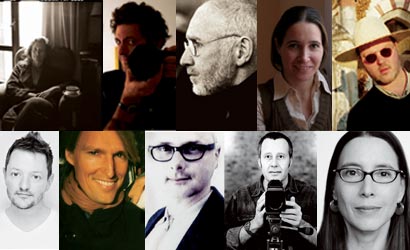
Annie Leibovitz
“I’m not a great studio portraitist. At best, my studio photographs are graphic. I can always fall back on composition. When you have a subject who projects himself well, an actor or some other kind of entertainer, you can get an interesting picture, but I don’t like trying to make something happen in the studio. It feels cheap to me. On the other hand, when you strip everything away, it’s terrifying. It’s just you and another person.
“I started doing studio portraits in the ’80s, when I had a large working space on Vandam Street. I did a lot of the work for the first Gap portrait campaign there. The pictures of Brice Marden and Tony Kushner come from that work. Then I moved to an even larger studio on 26th Street, but the productions got so big that I felt that the situation was out of control. It’s one of the reasons I sold the 26th Street building.
“There are truly intelligent photographers who work in the studio, but it’s not for me. Richard Avedon’s genius was that he was a great communicator. He pulled things out of his subjects. But I observe. Avedon knew how to talk to people. What to talk to them about. As soon as you engage someone, their face changes. They become animated. They forget about being photographed. Their minds become occupied and they look more interesting. But I’m so busy looking, I can’t talk. I never developed that gift. I have the same problem with my children. I know I have to be more involved, to interact more, but I love just looking at them.
“My pictures are helped by an environment. I love the street. I love going to someone’s house, seeing what’s on their walls, what chair they sit in. I like to see how they live. When I shot Bill Gates at his home in Bellevue, Washington, every time we set up lights between shots he would disappear and I’d find him sitting at his computer. It was all he did. This was before computers were omnipresent.
I was bewildered, and I thought that I would never want to have one. Then I realized that was the picture.”
For more on Annie Leibovitz’ portraits see The Iconographic Portrait, or Click Here for a gallery with her images.
James Hill
“I think for every photographer, there is always this feeling that at every moment you’re looking and wondering whether you should be taking a picture. You might be driving down the road, when you see something and wonder whether you should stop the car and shoot. And invariably if you don’t, you end up regretting it later. That’s the way it is for me as a photojournalist, at least, and to an extent I think the same goes for taking portraits. You’re always looking at faces and wondering.
“That’s primarily how I came to take the portraits of the Russian World War II veterans. During the war there were one million women serving in the Red Army. Now, 61 years after the war, those women are simply disappearing. So I felt this need to freeze this moment in time. For me, a portrait does that, no matter what else it might do. I think when I made these pictures I really began to understand the portrait, that it’s not just a person you’re shooting, but a moment. I shot them on Agfa APX 100 black-and-white film. The exposure was 1/125 second at f/5.6.
“I think that newspapers are opening themselves up to more portraiture and other kinds of photography. Especially in online editions of newspapers, including the New York Times, there’s a broader notion of what photographers can do and how they can capture what’s happening in the world. I recently did a story on the 25th anniversary of the Chernobyl nuclear disaster for the Times’s online edition, and it was all portraits.”
For more on James Hill’s portraits see The Portrait as Historical Document, or Click Here for a gallery with his images.
Albert Watson
“Whoever I’m shooting, whether it’s Bill Gates or Bill Clinton or a Las Vegas dominatrix or a prison convict or a young mother in Morocco, I give them the same attention, the same focus. I’m not really out there trying to capture fame or celebrity. I’m trying to capture a person’s charisma. I’m looking for something special about their facial geometry. Sometimes you find someone with absolutely zero charisma, and that can be startling and interesting too, because it’s actually very uncommon to find someone with zero charisma. Interestingly, when I do find someone like that, they’re often from the Midwest. You find people by keeping your eyes open, really. I was on the prowl in Las Vegas all the time. I was always scanning rooms, changing my own visual perspective, looking up, looking down, moving around, to see people from different angles. Sometimes I’d hang out in front of a ladies’ room to see women come out individually, just for that change in perspective.
It sounds a little strange, but it was effective.
“For the Las Vegas portraits, I was working with three assistants and four prearranged sets built in an unused kitchen in a casino. That was expensive — I was paying for everything myself. But it was very efficient. I started the project after completing a really classic black-and-white project on Morocco. So I wanted the Las Vegas project to be very different — color, more impressionistic. And that sort of dictated how I did the portraits.
“I was shooting mostly with a 4×5 camera, and occasionally my Hasselblad. I’m a bit old school, and I believe in film for this sort of work. Working with a 4×5 and a digital back has a delay. And with portraiture you need absolute control; you need to capture the moment you want. You can’t have the subject look at you with an expression that says, ‘Are you ready yet?’ That’s deadly.
“Getting the picture right has to do with much more than just where I put the lights. I’m known for a kind of technical expertise, but I’m not really a techy person. I worked early in my career to learn as much about light as possible so that I can go into a portrait session with someone and not spend my time fussing over it. It’s really about establishing a connection between me and my subject. A portrait is very emotional in this way.”
For more on Albert Watson’s portraits see The Charismatic Portrait, or Click Here for a gallery with his images.
Michal Chelbin
“I spent months with the people in my Strangely Familiar series. I like to spend time with people, to try to have intimacy with them.
My photos are not like a documentary portrait; my interest is not social or topical. I want to think it’s more personal. It was important that I spend time with my subjects in their houses, away from the circus. I also use sensitive film so I can shoot with ambient light, because flash makes people less comfortable.
“The circus performers didn’t understand why I didn’t focus on their technical skills or their acts, or why I would choose a particular person to photograph. They didn’t understand why we chose one girl, because she wasn’t the star of the group. But she has this amazing face; you look at her and you can tell yourself a story about her. I think sometimes it’s easier to work with children because they don’t have an awareness of how they are supposed to come out in a photograph, like which is their good side.”
For more on Michal Chelbin’s portraits see The High-Contrast Portrait, or Click Here for a gallery with her images.
Todd Eberle
“A successful portrait comes from having interest in and knowledge about a subject’s achievements, things that make them unique, and using that information to illustrate something about them and ‘tell a story’ in a photograph. I’ve often photographed people repeatedly over time, which I think is unusual: Rem Koolhaas, Frank Gehry, Jeff Koons, and my friend Yvonne Force, of whom I’ve made thousands of pictures. I also take a lot of ‘snapshots’ of the art world, which is a collection that’s accumulating into an abstracted, kind of echt-portrait of that world. You have to care about the people you are photographing and take the trouble to know them. The best portraits result from the intimacy and trust that you gain with them during the first photo session, and then over time.”
For more on Todd Eberle’s portraits see The Environmental Portrait, or Click Here for a gallery with his images.
Matthew Rolston
“I usually work in medium format, with a Mamiya RZ67, and often I work in large format, with a 4×5 and also a big 8×10 camera. Yes, it’s harder to work that way; it’s more cumbersome. But there is something wonderful about what happens when you make portraits in 8×10. You get something… I guess I would describe it as more soulful. In terms of working with the big camera, it takes a lot of skill to make that big box disappear. What I mean is, to get the subject to forget that there’s this big thing in front of him or her.
“Whenever I start the process of photographing someone, I am always thinking, ‘What is it I can identify about them as creative individuals, and why now? What’s special about this moment?’
“Does a portrait reveal what someone’s inner self is like? Do you know what I believe? I believe that everyone wears a mask, and beneath that mask is another mask. So what a photographer can reveal are the various masks we all wear.”
For more on Matthew Rolston’s portraits see The Art of Collaboration, or Click Here for a gallery with his images.
Mark Laita
“I am interested in individuals who wear their occupation, lifestyle, or region’s burden on their faces and bodies. For a lot of these people, asking to photograph them is a strange request, and they are pretty wary. But I show them my photographs and let them know there are all different kinds of people included in the project.
“The personalities change, but not the background, because I always use a seamless and the same lighting setup. We’ve shot in oil fields at 4 a.m., car garages, mountainsides, whorehouses — always with the same effect. I use a custom-built twin-lens 8×10 twin-lens reflex camera, because it lets me shoot relatively quickly. With an ordinary view camera, the person gets stiff; with a viewfinder, I can shoot shoot shoot.”
For more on Mark Laita’s portraits see The Portrait in Double Vision, or Click Here for a gallery with his images.
Hendrik Kerstens
“I shoot the portraits of my daughter Paula on 8×10, then I scan the film and work on the image in Photoshop. But a lot of people think I get the effect of the Dutch master paintings by manipulating the image somehow. I don’t. The lighting is all done in the studio, when I shoot. I don’t do anything in Photoshop that I wouldn’t do normally in a darkroom.
“For me, this series of portraits really represents a family business. My wife works with me as an assistant, and of course my daughter is the subject. So between us at home we have a lot of time to think about the pictures. It may take three or four days to discuss together and decide how to do a particular picture. And sometimes we work quickly. Once, when Paula came back from a school trip with a terrible sunburn, we immediately saw that it could be a photograph.
“Some people have wondered whether it is right to make your child the subject of work like this. Some of the pictures contain some nudity. It is a responsibility we take very seriously. We have to live with Paula, and we have to face the consequences that these pictures will be around in 50 years, when she is older. Some people say that a girl of this age is too young to give permission to be photographed; but I think if you listen well to your child, you can know if she is giving permission. You have to be sensitive. As for Paula, she loves to be photographed.”
For more on Hendrik Kerstens’ portraits see The Portrait as Masterpiece, or Click Here for a gallery with his images.
Nigel Parry
“I make sure everything is planned out before the subject arrives. He or she may have no idea what we’re doing until they get there. I get the workable shot — then go for the risky business. You don’t want someone to walk out on you at the beginning.
“Politicians are usually fun because they’re not wary about photography. They just want to get on with things. Meanwhile, I want to keep them there until the job is done. During the actual shoot, it’s a lot of adrenaline, running around all manic, barking orders at my crew. People see me sweat physically, and I demand so much from the people around me that they know we’re serious. And usually they just sort of give in.”
For more on Nigel Parry’s portraits see The Unexpected View, or Click Here for a gallery with his images.
Lori Grinker
“I think a portrait is a picture that expresses something about that person, that person’s life and personality. It does have to have a moment in it; but at the same time it’s a bit of the photographer’s impression of them or their setting. The way I really like to do portraits is to capture something from someone’s life when I’m with them. I think a lot of stories now are being told with portraiture, a journalistic portraiture, as opposed to just portraits for beauty. They’re difficult to do. With journalism you have to be in control and think fast; with portraiture you do have more time to create the situation you want, but you also have to know what you want.
“For Afterwar, in the beginning I wanted to do stories about the war experience. Later it was more the poetic dimension of the reality, and that turned into one picture from each situation. They’re not traditional portraits; it’s almost an interior portrait.
“In the photo of Oleg, the Russian man getting acupuncture, it was more comfortable with his prostheses for him to recline, and his wife and daughter were there, and he just looked beautiful to me. I had other pictures of him doing things around the center, but this one went past his wounds.
“Afterwar was a very difficult project, and I did it in color, which was especially challenging. When I started I was a black-and-white photographer, and suddenly I was working with no flash, in color, with slide film. And then I was learning to choose film, because I didn’t use just one film; I usually used Kodachrome 200 inside and Fujichrome 100 outside. So I was learning to work with the film, and learning how to shoot really slow and make my body into a tripod. I also developed a system of reflectors I bring in now when I’m using ambient light.”
For more on Lori Grinker’s portraits see The Photojournalistic Portrait, or Click Here for a gallery with her images.
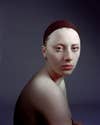
The-Portrait-as-MasterpieceSo-far-Kersten-s-work-h
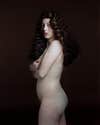
The-Portrait-as-MasterpieceKerstens-crafts-his-por
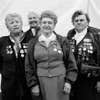
The-Portrait-as-Historical-Document-Veterans-of-t

The-Photojournalistic-Portrait

The-Photojournalistic-PortraitVietnam-veteran-Tim
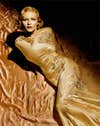
The-Art-of-CollaborationThis-portrait-of-actress-K

The-Art-of-CollaborationDiptych-of-actress-Salma-H